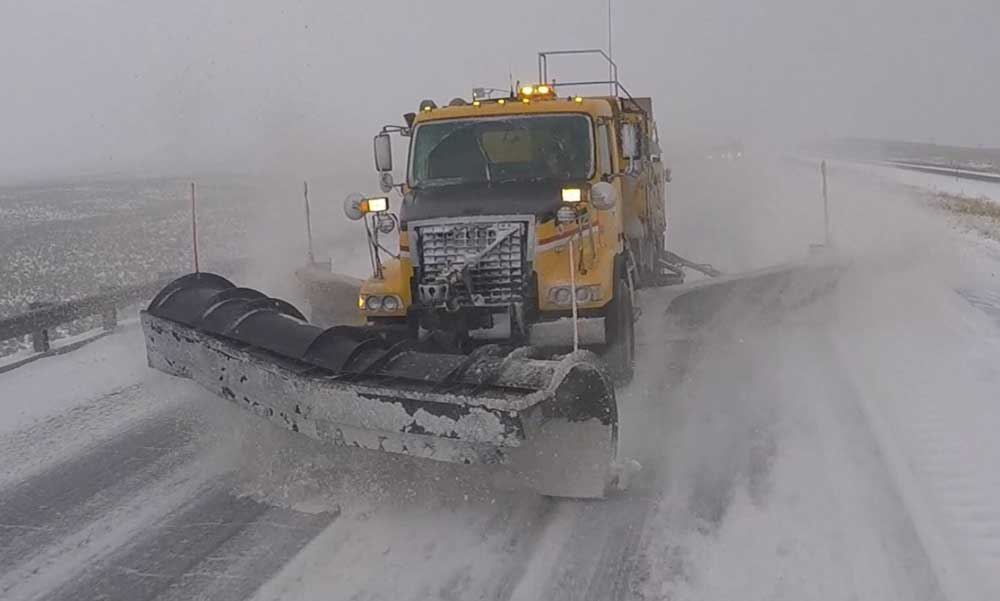Central Oregon roads will look different this winter after ODOT reduces services
Published 5:30 am Thursday, October 19, 2023

- An Oregon Department of Transportation snowplow clears a roadway in Baker County.
Central Oregon residents can expect a decrease in plowing, debris clearing and maintenance along state highways this winter, a tangible result of a $90 million cut in the Oregon Department of Transportation’s 2023-2025 budget.
Among the potential consequences ODOT foresees: Travelers should prepare for the possibility of being stranded on the roads this winter, and ODOT “strongly encourages” travelers to prepare for that possibility.
While this reduction in service will impact residents statewide, Central Oregon will experience profound consequences of the budget cut. Through 2025, ODOT will make maintenance along low-volume roads, which make up 57% of the roads in Central Oregon, a lower priority.
In addition, the department will reduce staff and overtime, significantly impacting responses to weather events.
“Having fewer maintenance staff and reducing the overtime that those folks often work will mean that road conditions could look different this winter. People will notice more snow and ice buildup, more chain requirements, longer delays and fewer open roads,” said Kacey Davey, a public information officer for ODOT.
Nearly half of ODOT’s budget — $288 million — is allocated for responding to incidents, emergencies and weather events, but now the department says “some highways previously plowed four times per day will be plowed once per day, if at all.”
Between “significant” road deterioration and less de-icing, ODOT conceded the service reduction will increase emergency response times, even as the department has recorded increasing crash rates in the last few years.
ODOT suggests drivers keep a complete emergency kit, phone charger and weather-appropriate clothes on hand for emergencies. ODOT also recommends drivers do not travel with less than half a tank of gas and refill their tanks regularly.
The announcement that ODOT would reduce services stirred controversy of its impact in public safety.
“The safety of Oregonians should be our number one priority when it comes to transportation. It’s unacceptable to leave Oregonians stranded during the winter,” said Rep. Emerson Levy, D-Bend.
Central Oregon first responders have their hands tied, but agencies say they will continue responding to all emergencies to the best of their abilities.
“We are aware of ODOT’s upcoming reductions and we are looking to keep the public informed about safe traveling practices and what motorists can do to be prepared during poor weather/road conditions,” said Oregon State Police Capt. Kyle Kennedy. “Our response to incidents and crashes will remain unchanged. Troopers will continue to respond to crashes and distressed motorists.”
Sheila Miller, public information officer of the Bend Police, appeared confident in the department’s ability to cope with varying weather conditions. “Our vehicles are equipped with all-weather tires,” she said. “We show up when a lot of people don’t.”
ODOT stated plowing and maintenance will be prioritized along the following routes: Interstate 84, U.S. Highway 97, U.S. Highway 26 to U.S. Highway 97 (Madras), U.S. Highway 20 from Suttle Lake to the viewpoint 20 miles east of Bend, state Highway 126 from Suttle Lake through Sisters to Prineville, state Highway 140 from state Highway 62 to Klamath Falls and state Highway 39 from Klamath Falls to the California border.
Davey said the department has worked to reduce projects and defer other forms of maintenance up until this point, but the lack of dedicated funding for transportation left ODOT with no other choice.
“We have a structural funding issue,” Davey said. “Revenue from the gas tax is on track to decline as vehicles become more efficient while the cost of doing business has increased rapidly. As a result, we can no longer maintain the state’s transportation system at the level Oregonians need. To balance our budget, we are scaling back maintenance and services around the state.”
To compensate for ODOT’s structural funding issues, the department said it will pursue several solutions. Options include expanding ODOT’s pay-per-mile or the Road Usage Charge program. The department also said funding from nontransportation sources or an increased gas tax could fill the gap, but those decisions will fall to the state Legislature.
“We have big decisions ahead in the Legislature, and one of those is how we fund the maintenance and operations of our transportation system,” Levy said. “As revenue from the gas tax goes down, we have an opportunity. As a Legislature, we must work together to find a long-term funding solution, so Oregonians can know their families are safe while they get to work, school, and play.”
Editor’s note: This article has been corrected. The original version misstated the percentage of low-volume roads located in Central Oregon. The Bulletin regrets the error.






